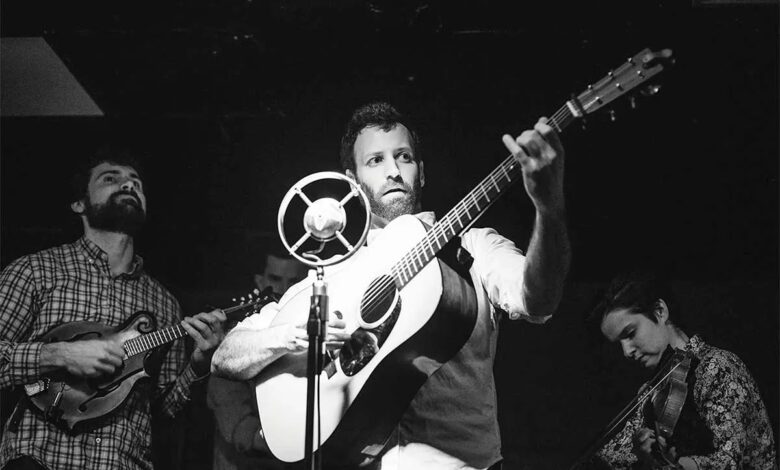Two Ways of Approaching the Flatpicking Jam Tune “Old Joe Clark”

Playing with others is perhaps the most fun part of flatpicking. There is a common repertoire of tunes, and musicians at all skill levels who have never met before can sit down and play them together—creating joyous sounds for pickers and audience members alike. One of the most well-known jam tunes out there is “Old Joe Clark,” originally a mountain folk song dating back to 19th-century Kentucky. In this lesson, I’ll share two versions of the tune—one simple enough that even beginning players can work through it, and the other a bit more complex—that you can mix and match for even more fun.
The first version (Example 1) shows the primary melody, based on the G Mixolydian mode (G A B C D E F, sounding here in A due to the capo at the second fret) and played in quarter and half notes using all downstrokes. The chords above the staff indicate what a rhythm guitarist would play.
Learn this basic version inside and out, memorizing it so you don’t need the notation. To help with that process, first find some recordings of the song and listen to them many times to get the general sound of the tune in your head. Second, be able to sing or hum the melody to yourself—there are lyrics to the tune, and learning a verse may help make the melody really stick. Third, be able to play the chords using a boom-chuck rhythm (bass notes on beats 1 and 3 and chords on 2 on 4) and have the melody going in your head while you strum the chords.
Before moving onto the more advanced version, I want to stress that Ex. 1 is a fine way to play “Old Joe Clark.” It is straightforward and not particularly flashy, but there is a lot to be said for playing a clean and accurate melody-based lead in a jam. As a listener, I would much rather hear a simple solo done confidently than watch someone struggle through an overly complicated arrangement. Also, bluegrass tempos can get very fast, and it’s much easier to play downstroke quarter notes at speed than alternate-picked eighth notes. So take the time to learn the primary melody well and you’ll be in a great spot to play the tune with others.
Example 2 builds off the primary melody with an eighth-note arrangement. Compare this version with the previous one and you’ll quickly see that the “Old Joe Clark” melody is still very much intact, but now with scalar passages woven throughout, adding momentum and shape. Use alternate picking, where downstrokes land on the beats and upstrokes on the upbeats. This gets tricky with the syncopation in measures 10 and 14, so follow the pick directions marked in the notation and watch the companion video to make sure you are hitting these rhythms correctly. This is a challenging arrangement, but it will be much easier to learn and memorize once you’ve mastered the previous version.
To take things a step further, you can combine these two examples in any number of ways to generate a multitude of variations. For example, play the first measure as the quarter-note (Ex. 1) version, then the second measure as the eighth-note (Ex. 2) version, then back to quarters for measure 3, and so on. Alternatively, you can play through the first half of the tune as quarters, then the second time as eighths. The variations are endless and limited only by your own willingness to explore. With just two versions of “Old Joe Clark,” you suddenly have a wide range of options to create your own melody-inspired solo.


This article originally appeared in the July/August 2024 issue of Acoustic Guitar magazine.



